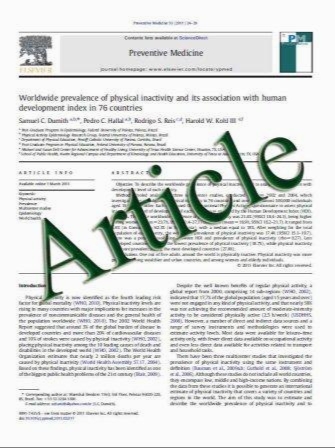Early visual impacts of optical coherence tomographic parameters in patients with age-related macular degeneration following the first versus repeated ranibizumab injection
- نوع فایل : کتاب
- زبان : انگلیسی
- مؤلف : Khulood Mohammed Sayed & Takeshi Naito & Toshihiko Nagasawa & Takashi Katome & Yoshinori Mitamura
- چاپ و سال / کشور: 2011
Description
Background The aim of this study is to evaluate the early visual impacts of various optical coherence tomographic (OCT) parameters after the first versus repeated intravitreal ranibizumab injection in patients with exudative age-related macular degeneration (AMD). Methods A retrospective comparative case series study was conducted on 20 eyes of 18 consecutive patients who received intravitreal ranibizumab injection for exudative AMD either for the first time (group 1; n=8) with no prior anti-vascular endothelial growth factor (anti-VEGF) injection in the same or fellow eye, or for repeated times during the course of monthly injected ranibizumab (group 2; n=12 eyes). The following baseline and 1 month post-injection data was collected for both groups and compared: bestcorrected visual acuity (BCVA), qualitative and quantitative OCT parameters including: foveal thickness, foveal volume (central 1-mm circle), retinal volume at 3- and 5-mm central circles, retinal pigment epithelium (RPE) elevation, type of fluid collections, and type of AMD lesion. The size of the fluid and fibrovascular lesion (FVL) areas were measured using manual delineation and automatic calculation of the device. We made correlations between the postinjection visual acuity (VA) and each of post-injection OCT parameters in both groups and these were the main outcome measures. Results In group 1, there was a strong correlation between post-injection logarithm of minimum angle of resolution (logMAR) BCVA and each of the following: FVL size, foveal thickness, retinal volume at 3- and 5-mm central circles, RPE elevation, the size of the fluid area, and age of the patient (r>0.70, p<0.05), whereas in group 2; logMAR BCVA was strongly correlated only with foveal volume (r= 0.74, p=0.01). Multivariate analysis showed that postinjection FVL size (r2=0.69) and foveal volume (r2=0.55) were the most important factors for VA 1 month following the initial and repeated ranibizumab injection, respectively. Conclusions The size of FVL and foveal volume showed a significant correlation with VA in AMD patients shortly after the first and repeated ranibizumab injection, respectively. Further studies with larger sample sizes are needed in order to support these results.
Graefes Arch Clin Exp Ophthalmol DOI 10.1007/s00417-011-1672-2 Received: 2 September 2010 / Revised: 7 February 2011 / Accepted: 21 February 2011


